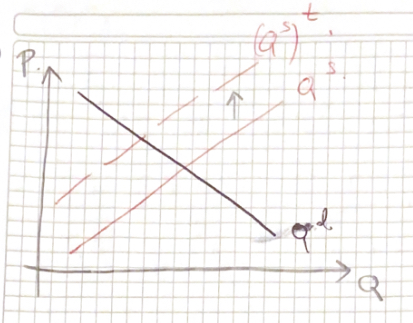You first solve for $P$ in the supply curve.
$Q = 3P + 50 \iff 3P = Q - 50$
$\iff P = \frac{Q}{3} - \frac{50}{3}$.
Since the producers got taxed, they need to charge a higher price to cover their costs (The right hand side of $P =$ can be interpreted as the minimum amount of money producers are willing to accept for selling the $Q$-th unit):
$P^t = \frac{Q}{3} - \frac{50}{3} + 3$
Simplifying,
$P^t = \frac{Q}{3} - \frac{41}{3}$
This is the new supply curve after including the tax.
Adding that $3$ to the right hand side of $P=$ corresponds to shifting the supply curve upwards, which due to the upward sloping nature of the curve, it is equivalent to a left shift (for a given market price, less units are supplied).
Graphically, we have this situation:

Which causes this new equilibrium:

In presence of a tax, the prices perceived by the consumer and the producer aren’t the same anymore, now you need to find both prices.
As a rule of thumb, in presence of a tax, $P^{\text{consumer}} > P^\star > P^{\text{producer}}$, and $Q^t < Q^\star$.
On the other hand, in presence of a subsidy, the reverse happens.
To find the new equilibrium quantity, you equate demand and taxed supply.
I get $Q^t = 256.4 < 260 = Q^\star$
Plugging into demand (or equivalently as seen on the graph, plugging into taxed supply) you get the price perceived/paid by the consumer:
I get $P^{\text{consumer}} = 71.8 > 70 = P^\star$.
Since both prices have to differ by the tax amount,
$P^{\text{producer}} = P^{\text{consumer}} - 3 = 71.8 - 3 = 68.8 < 70 = P^\star$.
The price you actually got is the price perceived/earned by the producer, which goes down as expected. The price that goes up is the price paid by the consumer, you have to remember you are now searching for two prices.
Since the consumer pays a higher price and the producer earns a lower price, they are both worse off with the tax.

